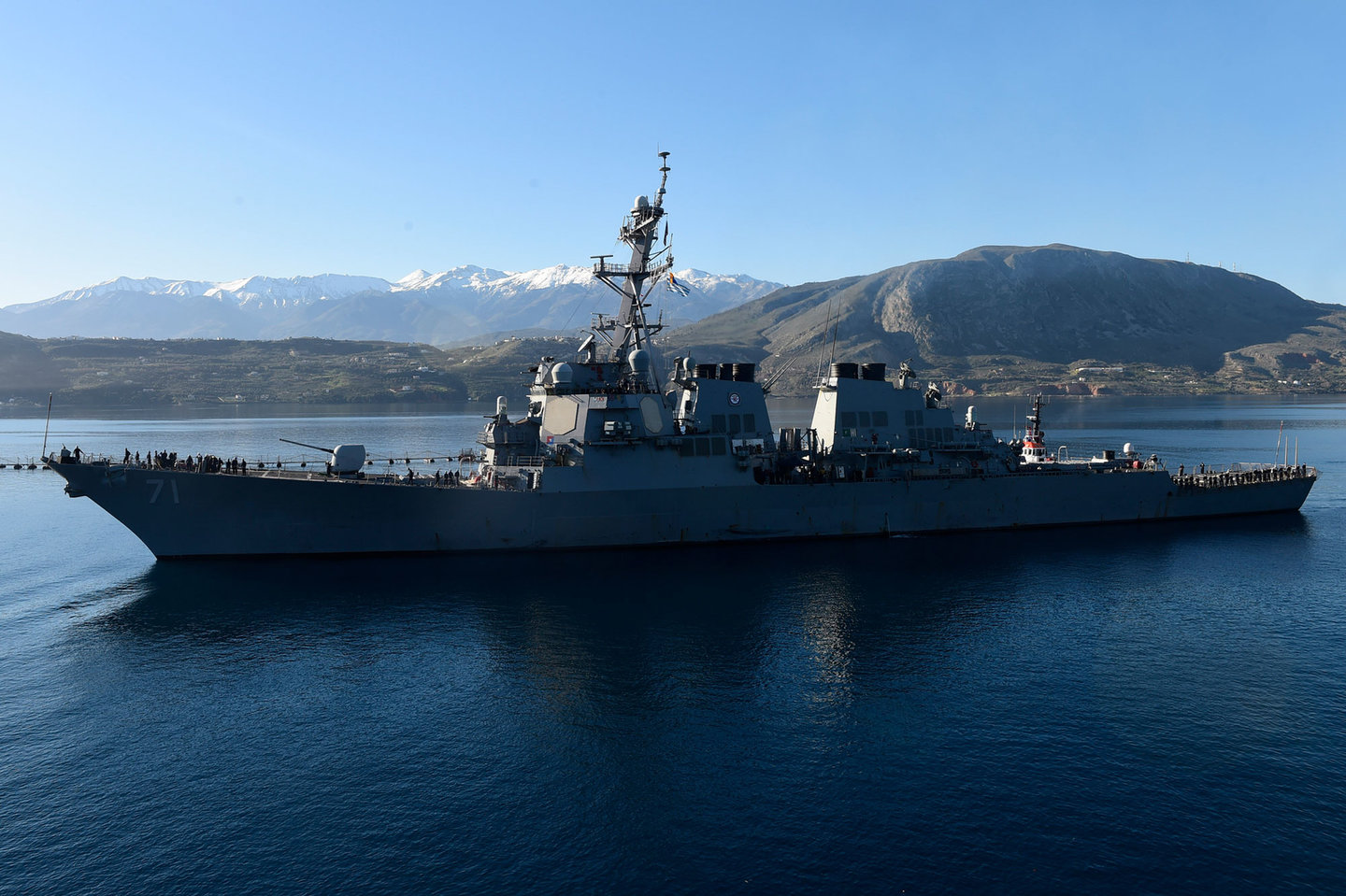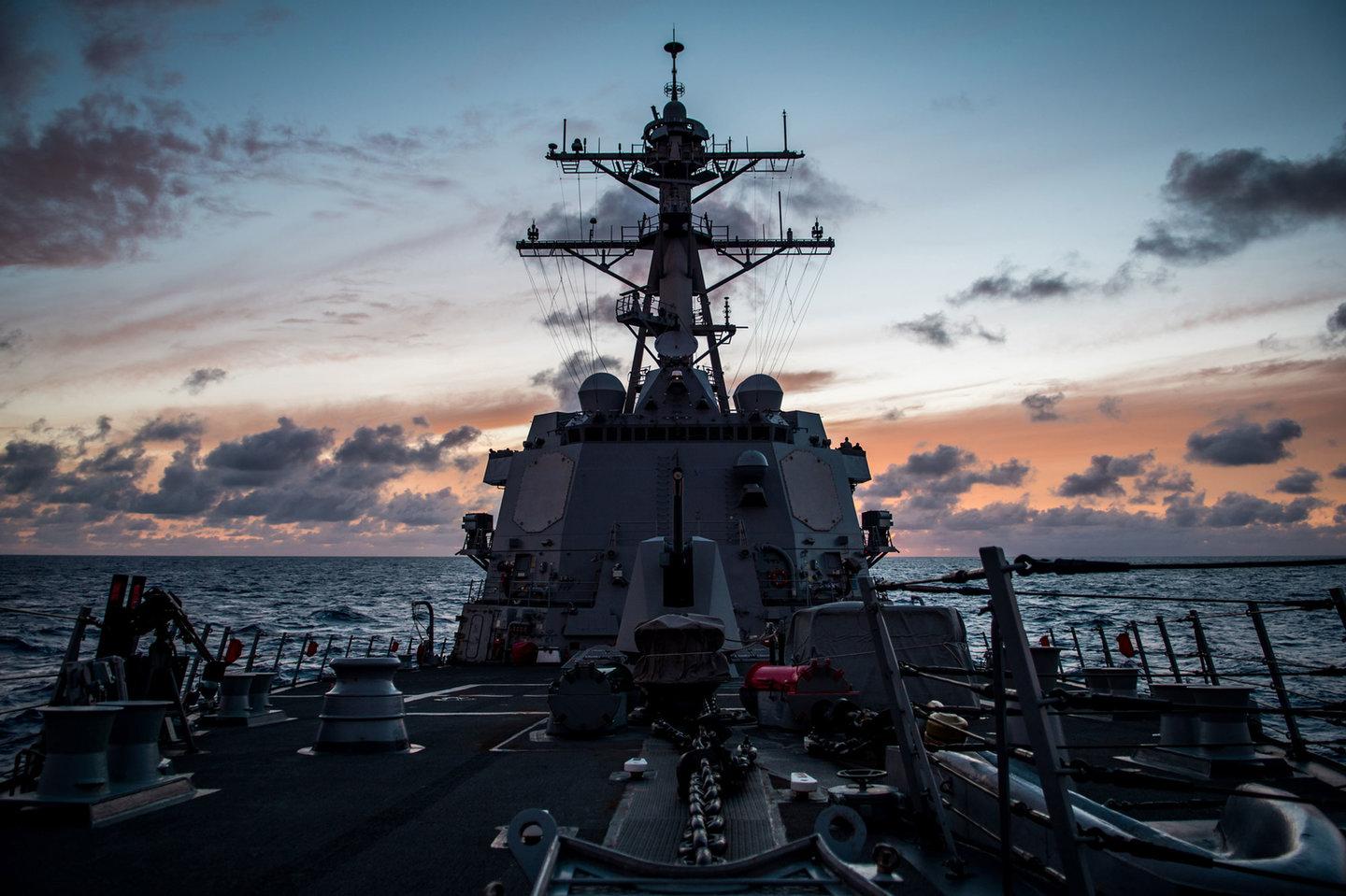Lasers
Are laser weapons finally coming to the battlefield?
For decades, militaries have been experimenting with laser technology for a multitude of roles on the battlefield, yet most systems remain at the prototype stage. Grant Turnbull looks at promising directed energy projects and asks whether they are finally coming to the battlefield.

// Image courtesy of
The fascination associated with using high-powered energy as a deadly weapon is not a new phenomenon. In modern times it can be traced back to sci-fi novels such as H.G. Wells’ War of the Worlds, and rumours circulating in the early 20th century claimed that wireless electrical energy could be used to remotely detonate enemy munitions and sink entire naval fleets.
In the 1930s, the UK offered a cash prize for anyone that could build a ‘death ray’ capable of killing a sheep at 200 yards. While the idea might seem comical, the allure of using directed energy on the battlefield has persisted. The invention of the laser in the 1960s saw a surge of interest in how this new technology could be used as a weapon.
While armed forces have embraced laser technology as a key enabler for several missions – including weapon system guidance, target designation, range finding, mine detection and non-lethal/dazzle weapons – these ultimately do not provide a kinetic effect that can disable or destroy enemy equipment. This is the realm of the high-power laser, which can burn holes through equipment, sheering off the wings of an aircraft or destroying engines and other key components of small vessels or vehicles.
The US leads the laser arms race
It’s no surprise that militaries around the world are racing to deploy solid-state laser (SSL) weapon systems, particularly in a defensive role where they offer high-precision, speed-of-light engagement, and unlimited ammunition compared with traditional (and often expensive) bullet and missile-based defence systems.
“SSLs are electrically powered, drawing their power from the ship’s overall electrical supply, and can be fired over and over, indefinitely, as long as the laser continues to work and the ship has fuel to generate electricity,” noted an April 2020 briefing paper to Congress by the Congressional Research Service.
This means they are particularly suited for countering new threats such as swarm attacks from drones or other platforms including fast attack craft at sea, where traditional systems could be overwhelmed by the sheer quantity of targets they are presented with. Lasers could also eventually be used to counter newer-generation cruise missiles.
"Throughout the 2020s, the US military is expected to continue the operational deployment of several laser weapon prototypes to further advance the technology."
But the development of laser weapons is a costly and complex endeavour. It is unsurprising then that the US is one of the only countries in the world that has a long history of funding the development of military-grade lasers, and has been financially capable of pursuing several laser programmes across its three main services over several years. Because of this, it is likely to be the first country to widely deploy such systems into theatre.
Throughout the 2020s, the US military is expected to continue the operational deployment of several laser weapon prototypes to further advance the technology. These deployments will also look to develop doctrine and training that will ensure they are used correctly and effectively, especially alongside traditional weapon systems.

Lockheed Martin’s HELIOS system will be built into the combat system of an Arleigh Burke-class destroyer. Image: US Navy
Laser developments for the US Navy
The US Navy, which first operationally deployed a 33kW SSL prototype aboard USS Ponce in 2014, has incorporated its laser efforts into what is known as the Navy Laser Family of Systems (NLFoS). This includes the SSL Technology Maturation (SSL-TM) programme, the Optical Dazzler Interdictor, Navy (ODIN), and Surface Navy Laser Weapon System (SNLWS) Increment 1. The latter is also known as the High Energy Laser with Integrated Optical Dazzler and Surveillance (HELIOS) system.
In March, Lockheed Martin announced that the +60kW HELIOS system had completed its critical design review and would be built into the structure and combat system of an Arleigh Burke-class destroyer in 2021, following land testing at the Surface Combat Systems Center at Wallops Island.
“HELIOS will provide an additional layer of protection for the fleet – deep magazine, low cost per kill, speed of light delivery, and precision response,” said Brendan Scanlon, HELIOS program director at Lockheed Martin’s rotary and mission systems division.
“An ODIN system has been installed on Arleigh Burke-class USS Dewey, representing the first operational employment of a stand-alone system that functions as a dazzler.”
In February, it was also announced by Naval Sea Systems Command that an ODIN system had been installed on Arleigh Burke-class USS Dewey, representing the first operational employment of a stand-alone system that functions as a dazzler.
This is seen as a vital capability for combating drone threats. Although the system won’t be able to shoot them down, it will still address an urgent counter-intelligence, surveillance, and reconnaissance need, said Commander David Wolfe, who leads the directed energy programme within the Program Executive Office Integrated Warfare Systems.
The SSL-TM programme is also advancing with reports suggesting that a 150kW laser developed by the Office of Naval Research and Northrop Grumman is now installed on the amphibious transport dock ship USS Portland, with testing to be carried out this year to inform system design, integration architectures, and future fielding and acquisition plans for laser weapons.

The US Navy is testing laser weapons on the destroyer USS Dewey. Image: US Navy
US Army laser weapons power up
The US Army is equally active in the development and fielding of laser weapons, particularly when it comes to beefing up air defences against UAS, as well as rocket, artillery and mortar projectiles. The army has several ongoing laser programmes, including the development of a prototype 50kW Multi-Mission High Energy Laser (MMHEL), which it hopes to install onto Stryker 8x8 vehicles by 2022.
This prototyping effort is led by Army Rapid Capabilities and Critical Technologies Office (RCCTO), which has contracted Northrop Grumman and Raytheon for competing MMHEL prototypes. The RCCTO is the lead organisation for the army’s directed energy efforts.
"The army recognises the need for directed energy lasers as part of the army's modernisation plan,” said Lieutenant General L. Neil Thurgood, head of the RCCTO. “This is no longer a research effort or a demonstration effort. It is a strategic combat capability, and we are on the right path to get it in soldiers' hands."
“No country is as close to fielding an operational viable laser weapon system as the US.”
The army had also been working on the High Energy Laser Tactical Vehicle Demonstrator (HEL TVD), a larger truck-mounted 100kW+ laser weapon designed to defend airfields and other fixed infrastructure.
In 2019, a Dynetics team, including partners Lockheed Martin and Rolls-Royce, was awarded a $130m contract to develop the HEL TVD. The army has since announced that it will merge HEL TVD with similar technologies developed by the US Navy to create an even more powerful 250-300kW class laser, as part of what is now known as the High Energy Laser-Indirect Fire Protection Capability (HEL-IFPC).
The army confirmed that it was on track to deliver for HEL-IFPC prototypes by FY2024, with initial demonstrations in FY2022.
While laser weapon programmes are also underway in other countries, for example the Dragonfire programme in the UK, and no doubt potential state-based adversaries such as Russia and China have several classified programmes in this area, no country is as close to fielding an operational viable laser weapon system as the US.
Despite this, there are still challenges to overcome and laser programmes have had a historical tendency to not meet the high expectations expected of them. Will this time be different?